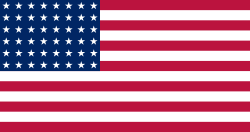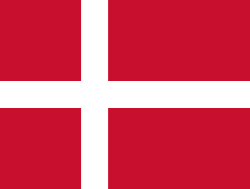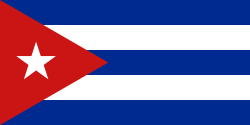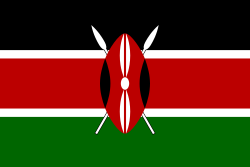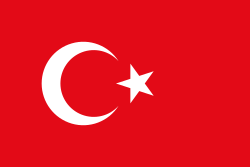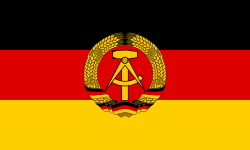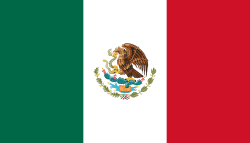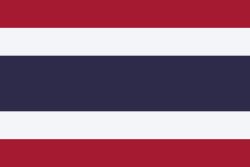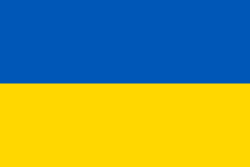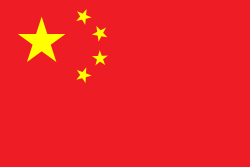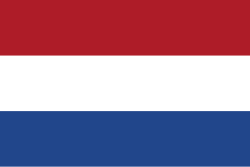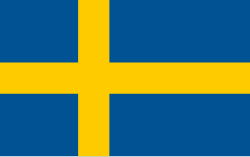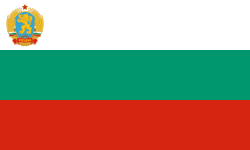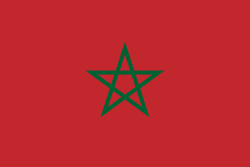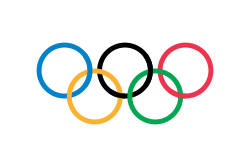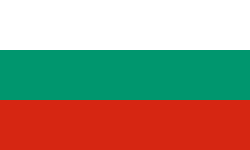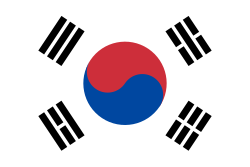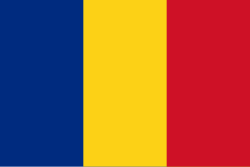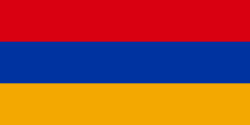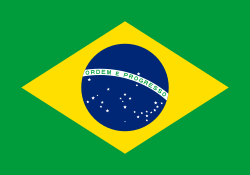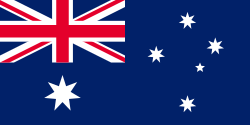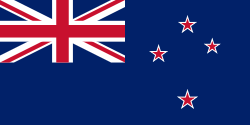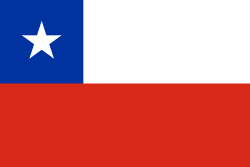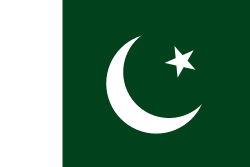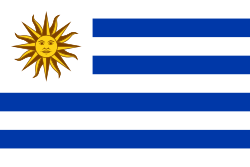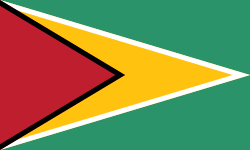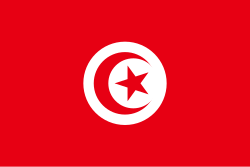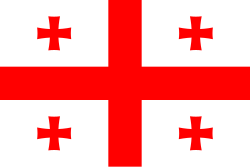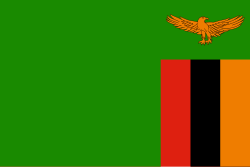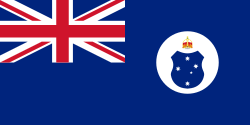Liste der Olympiasieger im Boxen

Die Liste der Olympiasieger im Boxen listet alle Sieger sowie die Zweit- und Drittplatzierten der Box-Wettbewerbe bei den Olympischen Sommerspielen auf. Sie ist gegliedert nach Geschlecht sowie aktuellen und früheren Gewichtsklassen. Im weiteren Teil werden die erfolgreichsten Boxer aufgelistet, die mindestens zwei Goldmedaillen gewonnen haben. Den Abschluss bildet die Nationenwertung.
Männer
Aktuelle Gewichtsklassen
Fliegengewicht
- bis 47,63 kg (1904)
- bis 50,8 kg (1920–1936)
- bis 51 kg (1948–2008)
- bis 52 kg (seit 2012)
Federgewicht
- bis 56,70 kg (1904)
- bis 57,15 kg (1908–1936)
- bis 58 kg (1948)
- bis 57 kg (1952–2008, seit 2020)
Leichtgewicht
- bis 61,24 kg (1904, 1920–1936)
- bis 63,50 kg (1908)
- bis 62 kg (1948)
- bis 60 kg (seit 1952)
Weltergewicht
- bis 65,27 kg (1904)
- bis 66,68 kg (1920–1936)
- bis 67 kg (1948–2000)
- bis 69 kg (seit 2004)
Mittelgewicht
- bis 71,67 kg (1904–1908)
- bis 72,57 kg (1920–1936)
- bis 73 kg (1948)
- bis 75 kg (seit 1952)
Halbschwergewicht
- bis 79,38 kg (1920–1936)
- bis 80 kg (1948)
- bis 81 kg (seit 1952)
Schwergewicht
- über 71,67 kg (1904–1908)
- über 79,38 kg (1920–1936)
- über 80 kg (1948)
- über 81 kg (1952–1980)
- bis 91 kg (seit 1984)
Superschwergewicht
- über 91 kg (seit 1984)
Frühere Gewichtsklassen
Halbfliegengewicht
- bis 48 kg (1968–2008)
- bis 49 kg (2012–2016)
| Olympia | Gold | Silber | Bronze |
|---|---|---|---|
| 1968 | |||
| 1972 | |||
| 1976 | |||
| 1980 | |||
| 1984 | |||
| 1988 | |||
| 1992 | |||
| 1996 | |||
| 2000 | |||
| 2004 | |||
| 2008 | |||
| 2012 | |||
| 2016 |
Bantamgewicht
- bis 52,16 kg (1904)
- bis 52,62 kg (1908)
- bis 53,5 kg (1920–1928)
- bis 54 kg (1932–2008)
- bis 56 kg (2012–2016)
Halbweltergewicht
- bis 63,5 kg (1952–2000)
- bis 64 kg (2004–2016)
Halbmittelgewicht
- bis 71 kg (1952–2000)
| Olympia | Gold | Silber | Bronze |
|---|---|---|---|
| 1952 | |||
| 1956 | |||
| 1960 | |||
| 1964 | |||
| 1968 | |||
| 1972 | |||
| 1976 | |||
| 1980 | |||
| 1984 | |||
| 1988 | |||
| 1992 | |||
| 1996 | |||
| 2000 |
Frauen
Fliegengewicht
- 48 bis 51 kg (seit 2012)
| Olympia | Gold | Silber | Bronze |
|---|---|---|---|
| 2012 | |||
| 2016 | |||
| 2020 |
Federgewicht
- 51 bis 57 kg (seit 2020)
| Olympia | Gold | Silber | Bronze |
|---|---|---|---|
| 2020 |
Leichtgewicht
- 57 bis 60 kg (seit 2012)
| Olympia | Gold | Silber | Bronze |
|---|---|---|---|
| 2012 | |||
| 2016 | |||
| 2020 |
Weltergewicht
- 60 bis 69 kg (seit 2020)
| Olympia | Gold | Silber | Bronze |
|---|---|---|---|
| 2020 |
Mittelgewicht
- 69 bis 75 kg (seit 2012)
| Olympia | Gold | Silber | Bronze |
|---|---|---|---|
| 2012 | |||
| 2016 | |||
| 2020 |
Erfolgreichste Teilnehmer
- Platz: Reihenfolge der Athleten. Diese wird durch die Anzahl der Goldmedaillen bestimmt. Bei gleicher Anzahl werden die Silbermedaillen verglichen, danach die Bronzemedaillen.
- Name: Name des Athleten
- Land: Land, für das der Athlet startete. Bei einem Wechsel der Nationalität wird das Land genannt, für das der Athlet die letzte Medaille erzielte.
- Von: Gewinn der ersten Medaille
- Bis: Gewinn der letzten Medaille
- Gold: Anzahl der gewonnenen Goldmedaillen
- Silber: Anzahl der gewonnenen Silbermedaillen
- Bronze: Anzahl der gewonnenen Bronzemedaillen
- Gesamt: Anzahl aller gewonnenen Medaillen
| Platz | Name | Land | Von | Bis | Gold | Silber | Bronze | Gesamt |
|---|---|---|---|---|---|---|---|---|
| 1 | László Papp | 1948 | 1956 | 3 | – | – | 3 | |
| 1 | Félix Savón | 1992 | 2000 | 3 | – | – | 3 | |
| 1 | Teófilo Stevenson | 1972 | 1980 | 3 | – | – | 3 | |
| 4 | Roniel Iglesias | 2008 | 2020 | 2 | – | 1 | 3 | |
| 4 | Boris Lagutin | 1960 | 1968 | 2 | – | 1 | 3 | |
| 4 | Oleg Saitow | 1996 | 2004 | 2 | – | 1 | 3 | |
| 7 | Nicola Adams | 2012 | 2016 | 2 | – | – | 2 | |
| 7 | Ariel Hernández | 1992 | 1996 | 2 | – | – | 2 | |
| 7 | Ángel Herrera | 1976 | 1980 | 2 | – | – | 2 | |
| 7 | Mario Kindelán | 2000 | 2004 | 2 | – | – | 2 | |
| 7 | Oliver Kirk | 1904 | 1904 | 2 | – | – | 2 | |
| 7 | Jerzy Kulej | 1964 | 1968 | 2 | – | – | 2 | |
| 7 | Julio César La Cruz | 2016 | 2020 | 2 | – | – | 2 | |
| 7 | Wassyl Lomatschenko | 2008 | 2012 | 2 | – | – | 2 | |
| 7 | Arlen López | 2016 | 2020 | 2 | – | – | 2 | |
| 7 | Harry Mallin | 1920 | 1924 | 2 | – | – | 2 | |
| 7 | Robeisy Ramírez | 2012 | 2016 | 2 | – | – | 2 | |
| 7 | Guillermo Rigondeaux | 2000 | 2004 | 2 | – | – | 2 | |
| 7 | Claressa Shields | 2012 | 2016 | 2 | – | – | 2 | |
| 7 | Alexei Tischtschenko | 2004 | 2008 | 2 | – | – | 2 | |
| 7 | Héctor Vinent | 1992 | 1996 | 2 | – | – | 2 | |
| 7 | Zhou Shiming | 2008 | 2012 | 2 | – | – | 2 |
Nationenwertung
Stand: bis und mit 2020
Literatur
- Volker Kluge: Olympische Sommerspiele. Die Chronik I. Athen 1896 – Berlin 1936. Sportverlag Berlin, Berlin 1997, ISBN 3-328-00715-6.
- Volker Kluge: Olympische Sommerspiele. Die Chronik IV. Seoul 1988 – Atlanta 1996. Sportverlag Berlin, Berlin 2002, ISBN 3-328-00830-6.
- Volker Kluge: Olympische Sommerspiele. Die Chronik II. London 1948 – Tokio 1964. Sportverlag Berlin, Berlin 1998, ISBN 3-328-00740-7.
- Volker Kluge: Olympische Sommerspiele. Die Chronik III. Mexiko-Stadt 1968 – Los Angeles 1984. Sportverlag Berlin, Berlin 2000, ISBN 3-328-00741-5.
Siehe auch
Weblinks
- Ergebnisdatenbank des Internationalen Olympischen Komitees (englisch)
Auf dieser Seite verwendete Medien
Olympic Rings without "rims" (gaps between the rings), As used, eg. in the logos of the 2008 and 2016 Olympics. The colour scheme applied here was specified in 2023 guidelines.
Olympic Rings without "rims" (gaps between the rings), As used, eg. in the logos of the 2008 and 2016 Olympics. The colour scheme applied here was specified in 2023 guidelines.
Pictograms of Olympic sports - Boxing. This is unofficial sample picture. Images of official Olympic pictograms for 1948 Summer Olympics and all Summer Olympics since 1964 can be found in corresponding Official Reports.
US Flag with 45 stars. In use 4 July 1896–3 July 1908. Created by jacobolus using Adobe Illustrator, and released into the public domain. This flag was used during the Spanish-American War.
US Flag with 45 stars. In use 4 July 1896–3 July 1908. Created by jacobolus using Adobe Illustrator, and released into the public domain. This flag was used during the Spanish-American War.
US Flag with 48 stars. In use for 47 years from July 4, 1912, to July 3, 1959.
Flagge des Vereinigten Königreichs in der Proportion 3:5, ausschließlich an Land verwendet. Auf See beträgt das richtige Verhältnis 1:2.
Flagge des Vereinigten Königreichs in der Proportion 3:5, ausschließlich an Land verwendet. Auf See beträgt das richtige Verhältnis 1:2.
Flag of Hungary from 6 November 1915 to 29 November 1918 and from August 1919 until mid/late 1946.
Autor/Urheber: F l a n k e r, Lizenz: CC BY-SA 2.5
Flagge des Königreich Italiens (1861-1946) In einem staatlichem oder militärischem Kontext ist die Version mit der Krone zu verwenden.
Autor/Urheber: F l a n k e r, Lizenz: CC BY-SA 2.5
Flagge des Königreich Italiens (1861-1946) In einem staatlichem oder militärischem Kontext ist die Version mit der Krone zu verwenden.
National- und Handelsflagge des Deutschen Reiches von 1935 bis 1945, zugleich Gösch der Kriegsschiffe.
Das Hakenkreuz ist im Vergleich zur Parteiflagge der NSDAP um 1/20 zum Mast hin versetzt.
National- und Handelsflagge des Deutschen Reiches von 1935 bis 1945, zugleich Gösch der Kriegsschiffe.
Das Hakenkreuz ist im Vergleich zur Parteiflagge der NSDAP um 1/20 zum Mast hin versetzt.
Flag of Italy from 1946 to 2003, when exact colors were specified.
this is the flag of the Soviet Union in 1936. It was later replaced by File:Flag of the Soviet Union (1955-1980).svg.
Flag of South Africa, used between 1928 and 1982. It is identical to the 1982 to 1994 version except that the shade of blue is darker. It is also known as the "Oranje-Blanje-Blou".
Flag of Romania (24 September 1952 - 21 August 1965)

Construction sheet of the Flag of Romania as depicted in Decree nr. 972 from 5 November 1968.
- l = 2/3 × L
- C = 1/3 × L
- S = 2/5 × l
Man sagt, dass der grüne Teil die Mehrheit der katholischen Einwohner des Landes repräsentiert, der orange Teil die Minderheit der protestantischen, und die weiße Mitte den Frieden und die Harmonie zwischen beiden.
(c) I, Cmapm, CC BY-SA 3.0
The flag of the Soviet Union (1955-1991) using a darker shade of red.
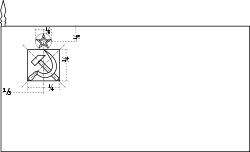
(c) I, Cmapm, CC BY-SA 3.0
The flag of the Soviet Union (1955-1991) using a darker shade of red.

Das Bild dieser Flagge lässt sich leicht mit einem Rahmen versehen
Variant version of a flag of Japan, used between January 27, 1870 and August 13, 1999 (aspect ratio 7:10).
Variant version of a flag of Japan, used between January 27, 1870 and August 13, 1999 (aspect ratio 7:10).
Flag of Second Polish Republic and later People's Republic of Poland in period from March 29, 1928 to March 10, 1980. Red shade used here is HTML "vermilion" #E34234. Proportion 5:8.
Flag of Second Polish Republic and later People's Republic of Poland in period from March 29, 1928 to March 10, 1980. Red shade used here is HTML "vermilion" #E34234. Proportion 5:8.
Flag of Mexico (1934-1968)
The flag of Brazil from 1968 to 1992 with 23 stars.
The flag of Brazil from 1968 to 1992 with 23 stars.
Autor/Urheber: Scroch, Lizenz: CC BY-SA 3.0
Flag of Bulgaria (1971-1990). Flag of Bulgaria with Bulgarian coat from 1971.
Autor/Urheber: Scroch, Lizenz: CC BY-SA 3.0
Flag of Bulgaria (1971-1990). Flag of Bulgaria with Bulgarian coat from 1971.
Flag of the Socialist Federal Republic of Yugoslavia (1946-1992).
The design (blazon) is defined in Article 4 of the Constitution for the Republic of Yugoslavia (1946). [1]
Flag of South Korea from 21 February 1984 to 15 October 1997, when the exact colors were specified into their shades.
Die Staatsflagge der Deutschen Demokratischen Republik, vom 1. Oktober 1959 bis 3. Oktober 1990
Flagge Deutschlands mit einem Seitenverhältnis von 3:2, anstelle von 3:5. Die 3:2-Version wurde vom Deutschen Bund und der Weimarer Republik verwandt.
Die Olympiaflagge der gesamtdeutschen Mannschaft von 1960 und 1964, sowie beider deutschen Mannschaften 1968.
Autor/Urheber: Scroch, Lizenz: CC BY-SA 4.0
National Flag of the People's Republic of Bulgaria (1948-1968). Tha flag has got the coat-of-arms from 1948
Autor/Urheber: Scroch, Lizenz: CC BY-SA 4.0
National Flag of the People's Republic of Bulgaria (1948-1968). Tha flag has got the coat-of-arms from 1948
State Flag of Venezuela 1930-2006, New flag was introduced 9 March 2006.
State Flag of Venezuela 1930-2006, New flag was introduced 9 March 2006.
Flag of Romania, (21 August 1965 - 22 December 1989/officialy 27 December 1989).

Construction sheet of the Flag of Romania as depicted in Decree nr. 972 from 5 November 1968.
- l = 2/3 × L
- C = 1/3 × L
- S = 2/5 × l
Olympische Flagge
Flag of Australia, when congruence with this colour chart is required (i.e. when a "less bright" version is needed).
See Flag of Australia.svg for main file information.The Canadian Red Ensign used between 1921 and 1957.
This image has compared for accuracy (mainly colors) using an image from World Statesmen. The only change is making the maple leaves green from red. This image has compared for accuracy (mainly colors) using an image from World Statesmen. The most recent version of this image has changed the harp into one with a female figure; see [http://flagspot.net/flags/ca-1921.html FOTW
The Canadian Red Ensign used between 1921 and 1957.
This image has compared for accuracy (mainly colors) using an image from World Statesmen. The only change is making the maple leaves green from red. This image has compared for accuracy (mainly colors) using an image from World Statesmen. The most recent version of this image has changed the harp into one with a female figure; see [http://flagspot.net/flags/ca-1921.html FOTW
Flag of Hungary from mid/late 1946 to 20 August 1949 and from 12 November 1956 to 23 May 1957.
Das Bild dieser Flagge lässt sich leicht mit einem Rahmen versehen
Flag of Canada introduced in 1965, using Pantone colors. This design replaced the Canadian Red Ensign design.
Flag of Georgia used from 1990 to 2004, with slightly different proportions than the 1918 to 1921 flag.
Das Bild dieser Flagge lässt sich leicht mit einem Rahmen versehen
Autor/Urheber: Zscout370, Lizenz: CC BY-SA 3.0
Flag of Italy from 2003 to 2006
Das Bild dieser Flagge lässt sich leicht mit einem Rahmen versehen
Flag of South Korea (1949-1984)
Autor/Urheber: SanchoPanzaXXI, Lizenz: CC BY-SA 4.0
Flag of Spain during the Spanish State. It was adopted on 11 October 1945 with Reglamento de Banderas Insignias y Distintivos (Flags, Ensigns and Coats of Arms Bill)
Autor/Urheber: SanchoPanzaXXI, Lizenz: CC BY-SA 4.0
Flag of Spain during the Spanish State. It was adopted on 11 October 1945 with Reglamento de Banderas Insignias y Distintivos (Flags, Ensigns and Coats of Arms Bill)
Autor/Urheber: Fornax, Zscout370, Lizenz: CC BY-SA 3.0
South African Red Ensign (without white roundel) from 1910 until 1912.
Die Flagge der Dominikanischen Republik hat ein zentriertes weißes Kreuz, das bis zu den Rändern reicht. Dieses Emblem ähnelt dem Flaggendesign und zeigt eine Bibel, ein Kreuz aus Gold und sechs dominikanische Flaggen. Um den Schild herum sind Oliven- und Palmzweige und oben am Band steht das Motto "Dios, Patria, Libertad" ("Gott, Land, Freiheit") und zur liebenswürdigen Freiheit. Das Blau soll für Freiheit stehen, Rot für das Feuer und Blut des Unabhängigkeitskampfes und das weiße Kreuz symbolisierte, dass Gott sein Volk nicht vergessen hat. "Dominikanische Republik". Die dominikanische Flagge wurde von Juan Pablo Duarte, dem Vater der nationalen Unabhängigkeit der Dominikanischen Republik, entworfen. Die erste dominikanische Flagge wurde von einer jungen Dame namens Concepción Bona genäht, die in der Nacht des 27. Februar 1844 gegenüber der Straße von El Baluarte, dem Denkmal, an dem sich die Patrioten versammelten, um für die Unabhängigkeit zu kämpfen, wohnte. Concepción Bona wurde von ihrer Cousine ersten Grades unterstützt Maria de Jesús Pina.
Chinese Taipei Olympic Flag. According to the official website of Chinese Taipei Olympic Committee, Blue Sky(circle) & White Sun(triangles) above the Olympic rings is neither the National Emblem of the Republic of China, nor the Party Emblem of Kuomintang (KMT), but a design in between, where the triangles do not extend to the edge of the blue circle, as registered at International Olympic Committee in 1981 and digitally rendered in 2013. Besides, the blue outline of the five-petaled plum blossom is broader than the red one. Moreover, the CMYK code of the blue one and the Blue Sky & White Sun is "C100-M100-Y0-K0", and different from the Olympic rings (C100-M25-Y0-K0). Note that it's the only version recognized by IOC.
Verwendete Farbe: National flag | South African Government and Pantone Color Picker
| Grün | gerendert als RGB 0 119 73 | Pantone 3415 C |
| Gelb | gerendert als RGB 255 184 28 | Pantone 1235 C |
| Rot | gerendert als RGB 224 60 49 | Pantone 179 C |
| Blau | gerendert als RGB 0 20 137 | Pantone Reflex Blue C |
| Weiß | gerendert als RGB 255 255 255 | |
| Schwarz | gerendert als RGB 0 0 0 |
Flag of Tunisia until 1999.
Flag of Georgia used from 1990 to 2004, with slightly different proportions than the 1918 to 1921 flag.
Die Olympiaflagge der gesamtdeutschen Mannschaft von 1960 und 1964, sowie beider deutschen Mannschaften 1968.
Autor/Urheber: Fornax, Zscout370, Lizenz: CC BY-SA 3.0
South African Red Ensign (without white roundel) from 1910 until 1912.
Flag of Romania (28 March 1948 - 24 September 1952)

Construction sheet of the Flag of Romania as depicted in Decree nr. 972 from 5 November 1968.
- l = 2/3 × L
- C = 1/3 × L
- S = 2/5 × l
Flag of Zambia before 1996
Flag of People's Republic of Mongolia 1945-1992
Flag of South Korea as it was in 1948 ⑴ ⑵. In 1949 the trigrams were rearranged.
this is the flag of the Soviet Union in 1936. It was later replaced by File:Flag of the Soviet Union (1955-1980).svg.
Flag of Cameroon, 1961-75
Flag of Mexico (1916-1934)
Flag of the Union of African States (Ghana-Guinea Union) between November 23, 1958 - April, 1961.
Flag used in 1908–12 Olympic games to represent Australasian team



